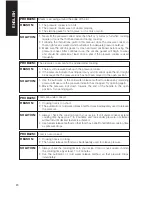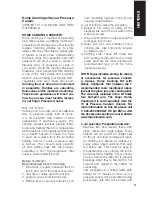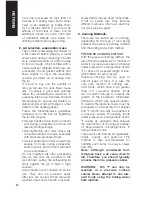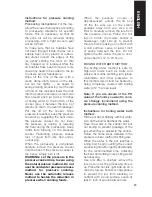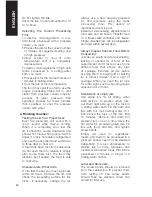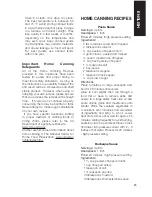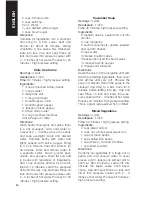
14
VEGETABLES APPROXIMATE
COOKING
TIME
Artichoke, large, without leaves
9-11 minutes
Artichoke, medium, without leaves 6-8 minutes
Asparagus, fine, whole
1–1½ minutes
Asparagus, thick, whole
1-2 minutes
Beans, in the pod
4 minutes
Beans, white, in the pod
8 minutes
Broccoli
2-3 minutes
Brussels sprouts, whole
4 minutes
Cabbage, red or green, ¼-inch slices 1 minute
Cabbage, red or green, in quarters 3-4 minutes
Carrots, ¼-inch slices
1 minute
Carrots, 1-inch slices
4 minutes
Cauliflower, flower heads
2-3 minutes
Common cabbage, thickly cut
1-2 minutes
Corn, on the cob
3 minutes
Endive, thickly cut
1-2 minutes
Green beans, whole
2-3 minutes
Green curly kale, thickly cut
5 minutes
Okra, small pods
2-3 minutes
Onions, whole, 1½-inch diameter
2 minutes
Peas, in the pod
1 minute
Potatoes, red, 1½-inch slices
6 minutes
Potatoes, red, new, small, whole
5 minutes
Potatoes, white, 1½-inch slices
6 minutes
Potatoes, white, new, small, whole
5 minutes
Pumpkin, 2-inch slices
3-4 minutes
Red beet, in ¼-inch slices
4 minutes
Red beet, large, whole
20 minutes
Red beet, small, whole
12 minutes
Spinach, fresh, thickly cut
2 minutes
Spinach, frozen
4 minutes
Swede (yellow turnip), 1-inch slices
7 minutes
Sweet potato, 1½-inch slices
5 minutes
Swiss chard, thickly cut
2 minutes
Tomatoes, in quarters
2 minutes
Turnip, in 1½-inch slices
3 minutes
Turnip, small, in quarters
3 minutes
Zucchini, Acorn, half
7 minutes
Zucchini, Summer, 1-inch slices
8 minutes
Fresh and dried fruit
Fresh fruit:
• Wash and pit or core fruit. If you
prefer, peel and slice it.
• Cook fruit in a steamer or pasta basket
when possible (steamer baskets sold
separately) and add at least half a cup
of water or fruit juice.
• Never fill the pressure cooker to more
than two thirds of its capacity.
•
If you prefer, add sugar and/or
seasoning to the fruit before or after
cooking.
• When you cook whole or halved fruit,
use the cold water or automatic release
method. When you cook fruit in slices
or pieces to make purée or conserve
use the natural release method.
• Cooking times can vary depending on
the ripeness of the fruit.
Dried fruit:
• Put dried fruit in the pressure cooker
with 1 cup of water or fruit juice for
each cup of dried fruit.
• If you prefer, you can add seasoning
or other flavoring. Use the cold water
or automatic release method when
the cooking period is complete. If
after the cooking period the fruit is still
hard, let it simmer in the cooker with
the lid removed until it is ready. Add
water if necessary.
FRUIT APPROXIMATE
COOKING
TIME
Apples, dried
3 minutes
Apples, fresh in slices or pieces
2-3 minutes
Apricots, dried
4 minutes
Apricots, fresh, whole or in halves
2-3 minutes
Blueberries
8-10 minutes
Peaches, dried
4-5 minutes
Peaches, fresh, in halves
3 minutes
Pears, dried
4-5 minutes
Pears, fresh in halves
3-4 minutes
Prunes
4-5 minutes
Raisins
4-5 minutes
Dried beans and other legumes
•
WARNING:
Never fill the pressure
cooker to more than half its
ENGLISH




















